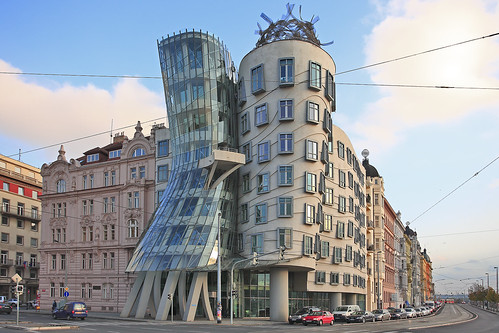
Post Modernism Lecture
Postmodernism is a movement in the post 1960s that influenced the arts, architecture and literature. It moves away from the Modernist movement because it denies the existence of any ultimate principles and lacks scientific, philosophical, or religious truth. It follows the idea that there are many ways of knowing, and many truths to a fact – where knowledge is gained from a number of perspectives. It favoured a more entertaining concept of art, using new artistic forms developed using new artistic forms enriched by video and computer-based technology. It provides emphasis on unique forms which are striking. They were designed not only to deliver conventional function but also combined with characteristics of meaning such as pluralism, irony, paradox, and contextualism. It brought about the revival of historical elements and techniques.
The end of the Second World War saw the rise of the amount of money people had. More and more products began to be bought and having ‘the best’ was important. Due to the high demand of consumerism new manufacturing techniques developed. More goods were being manufactured at a more economically affordable price. A ‘throw away culture’ was brought about where products were designed to be used a few times and then disposed of to keep up with trends. An example is the ‘Paper Chair’ by Peter Murdoch in 1964.

Nationale Nederlanden Building, Prague (1992-97) An example of deconstructivism – an anti-geometric style of postmodernist architecture – designed by architect Frank Gehry.
The idea of ‘youth culture’ grew. The teenagers of its era realised they could break away from the traditions of following their parents where you instantly went from a ‘child’ to an ‘adult’. They began to work and earn money which they could then spend on themselves, such as a Walkman radio. The fashion industry grew along with marketing and mass media which targeted teenagers. Fashion became a way to express and experiment with identity. Their freedom increased.
From the focus on advertisement came Pop Art. It involved artists such as Andy Warhol and David Hockney. They looked to commercial culture, Hollywood movies (such as iconic figures) and pop music and produced comic-like art. It included images of Marilyn Monroe and even a famous painting of a ‘Campbell Soup’ which showed mass consumerism and the importance of everyday objects we take for granted.

100 Cans, 1962. Andy Warhol
References
http://www.idesign.wiki/postmodernism-1950-today/
http://www.visual-arts-cork.com/postmodernism.htm
